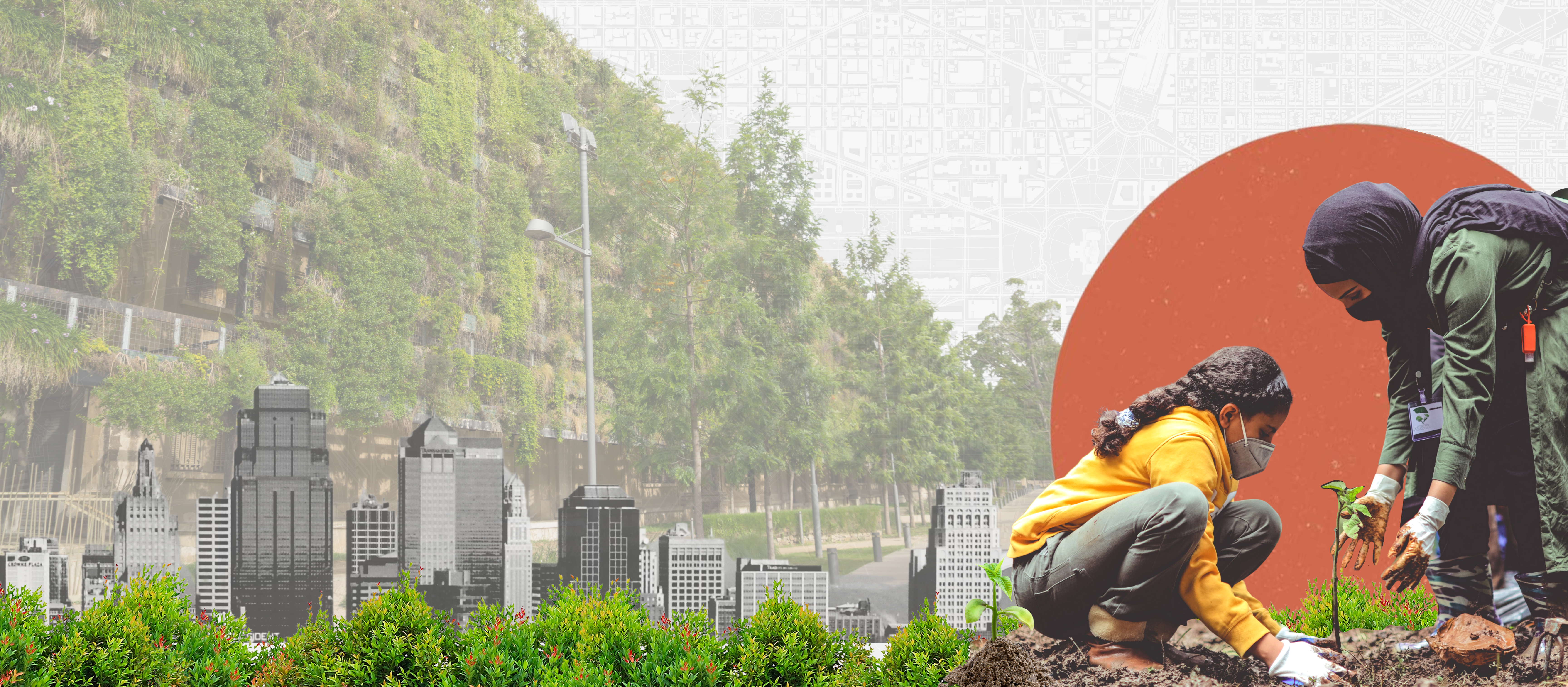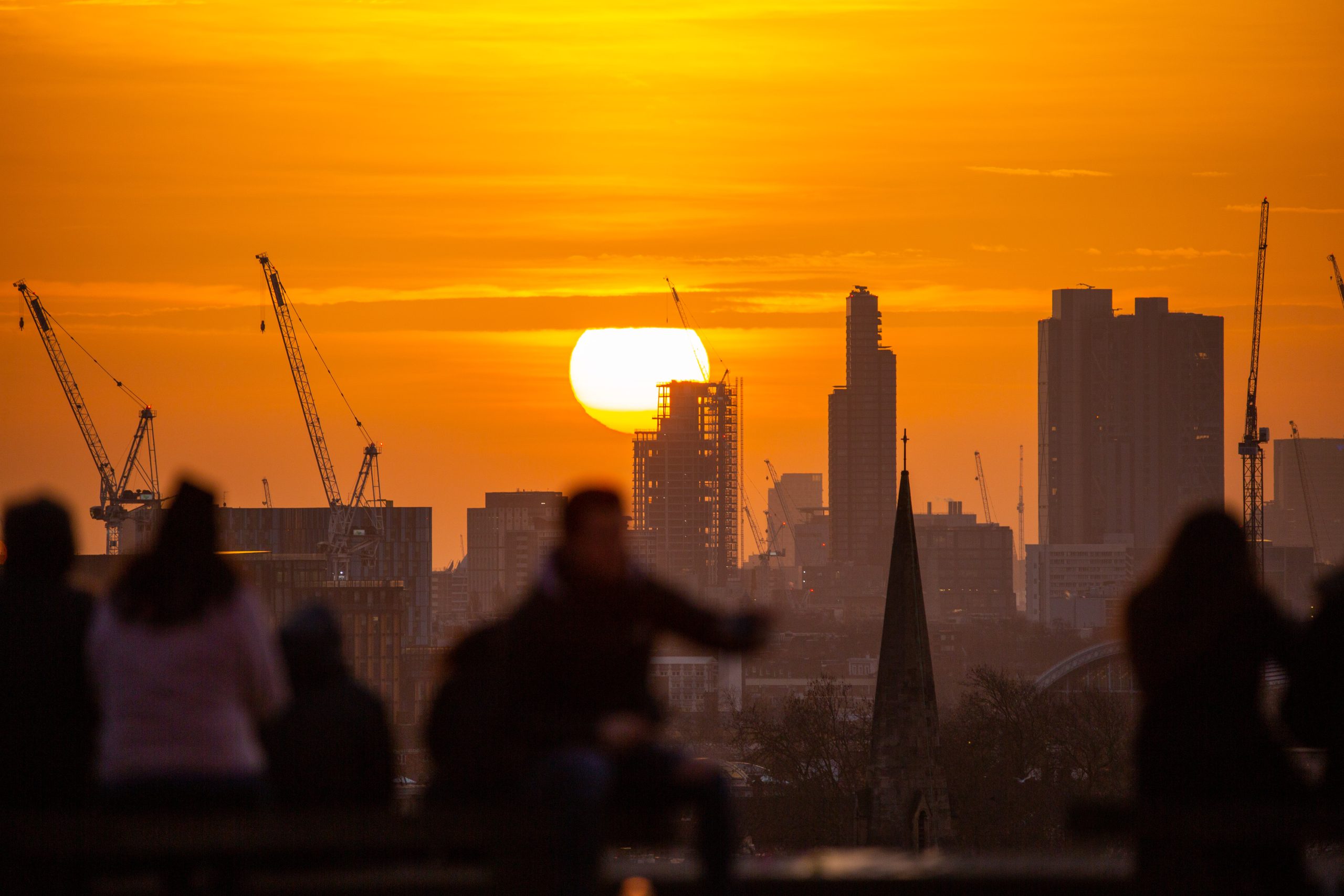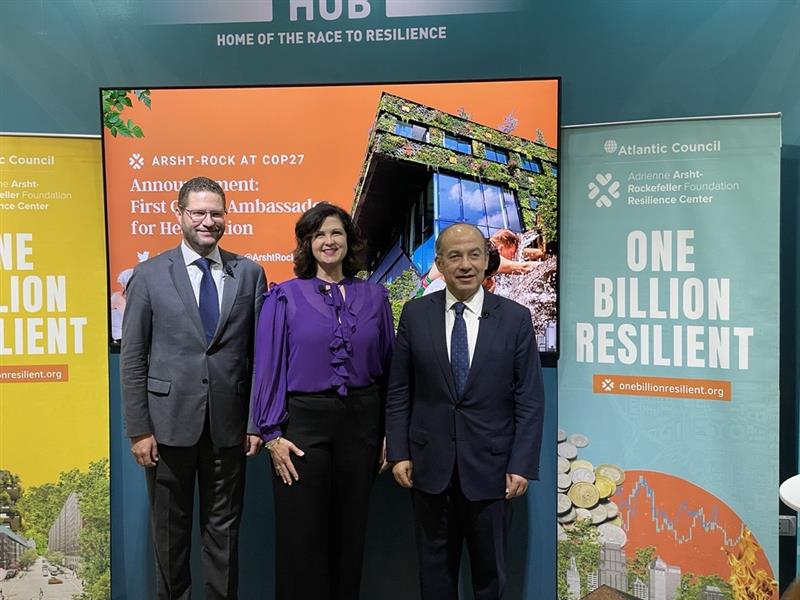Countdown to the “Cooling COP”: what we can learn from COP27
The landmark deal to compensate vulnerable nations hit hardest by the climate crisis is a positive and critical step, but can it make up for the failure to move beyond agreements made at COP26 and a momentous backslide in addressing the root cause of climate change?
By , Kathleen Euler, Jessica Dabrowski Tue, Nov 22, 2022
Thirty years after the United Nations Convention on Climate Change was adopted, the 2022 U.N. Conference of the Parties (COP27) in Egypt took place against the backdrop of an ever-worsening global climate crisis. Accelerated warming has dramatically intensified heatwaves, fires, floods, and droughts that irreparably alter communities, pollute air and water, damage ecosystems and infrastructure, crush local economies, and endanger physical and mental health.
Dubbed the “implementation COP,” COP27 set out to close the gap between rhetoric and reality. The landmark deal to compensate vulnerable nations hit hardest by the climate crisis is a positive and critical step, but can it make up for the failure to move beyond agreements made at COP26 and a momentous backslide in addressing the root cause of climate change?
With nations failing to take the action urgently needed, we look beyond the negotiation table for action—and hope—in tackling the expanding climate crisis head-on.
“Loss has a name. Damage has an address.”
The Global South has not only borne the brunt of the climate crisis but these countries and economies also have limited capital with which to invest in building resilience to climate impacts. Their cities and communities are left reeling from the devastation they did little or nothing to cause. Meanwhile, wealthy countries—which are historically the largest greenhouse gas emitters—generally have the resources to develop funding streams to recover from and adapt to disasters.
After a year of record-setting disasters, “loss and damage” officially appeared on the COP agenda for the first time. Tense and extended negotiations led to the creation of a fund to compensate developing countries for the human and economic losses from the many impacts of climate change. The breakthrough agreement ended thirty years of deadlock during which developed countries refused to commit to paying for climate damages caused by their own high emissions out of fear that they would be held liable for the losses. Over the next year, a committee will determine what form the fund should take, which nations should be responsible for contributing, and where the money should be directed.
One step forward, two steps back
While the loss and damage fund serves as a significant first step towards ensuring people across the globe are better able to survive unavoidable and irreversible climate damages, it still falls short.
The lack of new emissions-reduction commitments by nations gathered at COP27 only set us further behind our already “woefully inadequate” progress towards curbing emissions that are roasting our planet. Kathy Baughman McLeod, Director of Arsht-Rock, says that this failure is attributed to the fact that “the fossil-fuel industry is still so deeply influential over country delegations” and will “devastate plans to keep global heating to no more than 1.5 degrees Celsius” above pre-industrial levels, as per the 2016 Paris Agreement.
One concern is that the loss and damage fund agreement lacks a clear focus on the most vulnerable, causing fundamental questions about the future use of the funds by recipient countries. Furthermore, it lets some of the largest greenhouse gas emitters off the hook – China, India, Brazil, and Indonesia, as developing nations, won’t have to contribute to the loss and damage fund. Their inclusion in the agreement “could have been one other leverage point to make them cut emissions, notes Arsht-Rock Director of Global Policy Jorge Gastelumendi. “Countries like these are poised to replace developed countries as the primary cause of climate-related loss and damage.”
What happens in Pakistan won’t stay in Pakistan
The bloc of developing countries that drove the loss and damage negotiations was spearheaded by Pakistan, which suffered from the devastating flooding that covered a third of the country earlier this year. The destruction and its aftershocks served as a grim reminder that countries need urgent support to help their communities survive the aftermath of climate disasters. Receiving funding is only half of the battle. The other half is learning from those on the frontlines of this crisis to replicate and accelerate the delivery of adaptation and resilience- this was a major COP27 lesson.
Coming soon to a city near you
By 2050, more than 970 cities will experience average summertime highs of 35˚C (95°F)—nearly triple the 354 cities that already do. The urban population exposed to these sky-high temperatures will increase by 800 percent, reaching 1.6 billion by mid-century.
The urban poor will remain the most susceptible to heat-related health impacts and economic losses, which will be widespread. The average city will lose nearly 2 percent of its annual economic output if steps to build resilience to heat are not taken immediately—a loss of trillions of dollars in economic prosperity. Under a business-as-usual scenario, some of the worst-off cities will lose almost 11 percent of gross domestic product to heat-related losses by 2100.
Cities—and their leaders—are a crucial part of the solution
While cities will face the brunt of climate-driven extreme heat and related risks, they are also a crucial part of the solution. As our Global Chief Heat Officer (CHO) Eleni Myrivili said at COP27, “cities know where the problem is, and what they really need to do to respond to it.” Action at the urban level can be transformational and deliver sustainable, climate-resilient development to large numbers of people.
Mayors and other local city leaders are key players in ensuring communities have the resources, tools, and knowledge they need to adapt to and overcome the intensifying consequences of climate change. When extreme heatwaves hit Freetown, Sierra Leone, Chief Heat Officer (CHO) Eugenia Kargbo and City Champion for Heat Action Mayor Yvonne Aki-Sawyerr found a low-cost, scalable way to protect women exposed to both the health and economic effects of extreme heat. They co-designed a project with market traders in three of Freetown’s largest street markets to install heat-reflective panels to provide shade cover, along with solar-powered lights for extending the market hours and enhancing security, directly benefiting more than 2,000 women.
Among those helping to herald the deadly risks of extreme heat to national and global leaders – and share solutions – is the first Global Ambassador for Heat Action: former President of Mexico Felipe Calderón. In the new role announced at COP27, he will raise global awareness about the risks related to extreme heat for human health, the economy, and jobs. He will promote the implementation of effective, actionable solutions that mayors and other leaders have undertaken to tackle this threat.
For real action and progress, look beyond negotiators
The outcome of the COP27 negotiations was a crucial, though incomplete, step in combatting the impacts of climate change. However, it was not the only path toward protecting vulnerable communities from the shocks and stresses of the crisis. As Arsht-Rock Director of Global Policy Jorge Gastelumendi observed in a discussion with other Atlantic Council experts on the eve of COP27, “the space in which all the non-state actors are participating—in particular the private sector—is where the movement is happening.”
Who doesn’t love insurance?
Arsht-Rock, Marsh McLennan, and the UN High Climate Champions demonstrated the power of non-state actors when they announced the Insurance Sector Mobilization Campaign. The campaign will accelerate and scale the insurance sector’s capabilities to advance climate adaptation and resilience, driving a transition from ambition to action.
Francis Bouchard, Marsh McLennan’s Managing Director of Climate, expanded on this during a conversation with Arsht-Rock’s Jorge Gastelumendi, saying “insurance has traditionally played an integral role in sending risk signals.” When it comes to climate, insurance is a powerful tool to not only respond to claims following climate disasters but also find ways to send risk signals earlier. This can push communities to increase their adaptive capacity and resilience before climate disaster strikes.
Making cities cool again
Insurance is just one way the private sector can drive meaningful change and help communities build resilience to climate risks. Scaling investment in cooling solutions is also essential to protect the lives and livelihoods of vulnerable and marginalized populations, who are disproportionately impacted by climate-driven extreme heat.
At COP27, Arsht-Rock and its partners launched the Cool Capital Stack: a new, global climate adaptation financing initiative that mobilizes investment in nature-based and climate-friendly cooling projects and technologies. The Cool Capital Stack will harness the full capital continuum – from philanthropy and blended finance to insurance approaches, and from social impact bonds to commercial capital. This “stack” of different sources will be necessary to deliver all of the benefits of investing in both passive and mechanical interventions in heat-exposed communities around the world.
When women lead, everyone wins
Despite heaping evidence that women bear a disproportionate burden from the impacts of climate change, they are still largely underrepresented in the processes of formulating and implementing climate policies that would ensure more inclusive outcomes, solutions, and investments. While COP27 featured robust dialogue about the importance of including marginalized and vulnerable groups at the policy table, women made up less than 34% of country negotiating teams at the UN summit.
Even with the headwinds women have faced in gaining platforms and space as climate leaders, those who have persevered have been among the most effective. A 2019 study found that national parliaments with more female representation pass more stringent climate change policies. At Arsht-Rock, our female Chief Heat Officers have spearheaded projects like installing cool pavements and roofs and planting trees to increase canopy in dense cities with a lack of green space., and helped pass policies that test innovative health-based heat wave warning systems and build and implement plans to protect outdoor workers. These women leaders are well positioned to help prepare for and protect their communities from the “silent killer” that is extreme heat. More inclusive and collaborative policy design and implementation can help ensure that the most vulnerable are prepared and protected – and included in the solutions.
House Speaker Nancy Pelosi, who attended COP27 leading a US Congressional Delegation, also highlighted the importance of increasing women’s resilience through increasing access to education. In a discussion with Representative (and Chairwoman) Kathy Castor and Arsht-Rock’s Kathy Baughman McLeod, she said, “If you want this to succeed with this, you must make a commitment globally to the education of women. It is so central to all of this.”
Ready Player One
Technology plays a major role in solving the climate crisis – and the roughly $200 billion video gaming industry is at the table and leaning in. Every day, nearly 3 billion people play video games—half of them are women. Technology and data can be deployed to educate and equip individuals with the skills to protect themselves and their community. Arsht-Rock has recognized the power of these platforms and has invested in gaming and social technologies.
From reaching people where they are with Garden Story and Eco to motivating policymakers to integrate climate solutions with our new virtual reality prototype, the possibilities are endless on these gaming and social platforms. By building resilience solutions and climate survival skills into the games played by people in every geography in the world, we can capture the popularity of this technology to help build new knowledge and behaviors that will save lives and livelihoods.
Counting down to COP28
The power of collective action was on full display at COP 27. As Arsht-Rock’s Kathy Baughman McLeod said, “NGOs and civil society, young and indigenous activists, philanthropy and the private sector (particularly the finance and insurance sectors), and mayors and governors played their largest role yet in driving new solutions for climate mitigation and adaptation.” Whether it is reaching an informal sector worker with new skills and life-saving strategies through their favorite video game, a development bank investing in climate-friendly cooling systems that can be accessed the world over, or a governor adopting warning systems for extreme heat waves that will help their citizens avoid a silent killer, our collective action at COP27 has demonstrated that we can build community resilience in the face of the climate crisis.
As the clock begins to tick down for COP28—already informally dubbed the “cooling COP”—we must continue to push for a cooler future that protects people, communities, and local economies from climate impacts. The COP27 loss and damage agreement is an exciting and positive breakthrough – and it shows promise to address the symptoms of the crisis, but our work is not done – the job of eliminating the emissions that are cooking the planet and the people on it is still waiting for us.



